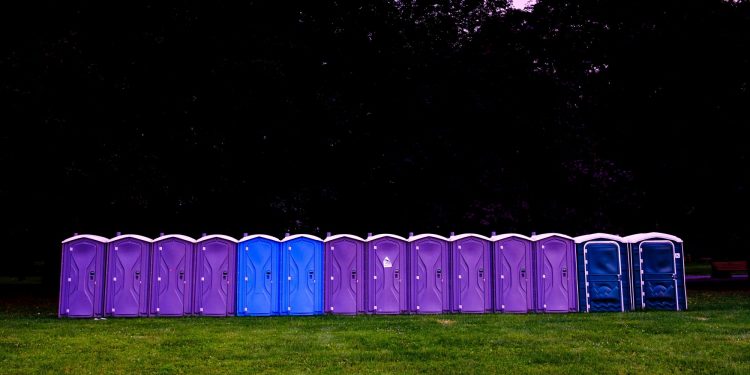Social and cultural issues drive the need for transparency.
On the ground, sentiments regarding Japan’s new transparent toilets have been a mix of privacy concerns and praises for safety; on Twitter, most Japanese netizens have felt that they were impractical due to fears of malfunction.
But what exactly are these transparent toilets?
THE TOKYO TOILET Project
These transparent toilets are part of a new project unveiled by The Nippon Foundation in early August. As part of this project, three conjoined transparent toilet cubicles were installed in Yoyogi Fukamachi Mini Park and three other in Haru-no-Ogawa Community Park.
The main aim of these installations is to address two main concerns surrounding public toilets, especially those located in parks: cleanliness and safety. They come amidst stereotypes among the Japanese public that public toilets are “dark, dirty, smelly, and scary”.
These stereotypes could be caused by mysophobia and sexual harassment.
Mysophobia
A cultural phenomenon in Japan, ‘keppekishō’, could be one possible cause of the nation’s fear of using public toilets. Roughly translated, the term means “fastidiousness” or “phobia of dirt”.
From antibacterial products to squat toilets, Japan’s obsession with cleanliness has always been fascinating.
Yet, it has also been a sign of a serious mental epidemic. According to an anonymous 52-year-old Japanese reporter, his fear of contamination by germs in toilets became so extreme that he would avoid public toilets in train stations altogether.
Of course, he isn’t the only one suffering from obsessive-compulsive disorder (OCD) and there are many more like him.
Sexual harassment and perverts
The Japanese social phenomenon of ‘sekuhara’ could be another possible cause of the fear of using public toilets. The term is an abbreviation of ‘sexual harassment’. In a country where sexual harassment and public indecency are grossly under-reported and under-criminalised, public toilets are hotspots for sexual predators to lurk in.
In 2018, two men were arrested on the same night for willfully entering a Sapporo supermarket’s women’s toilet. One of them was caught secretly filming a female supermarket employee from a neighbouring stall while the other was wearing women’s clothing and occupying a stall. Both of them were middle-aged men.
Public harassment faced by Japanese women has been reported to be much more common than that faced by Japanese men. 47.9% of Japanese women surveyed in 2019 claimed that they had been touched inappropriately before, while 41.9% of them claimed that they had experienced close physical contact (presumably unwarranted).
Similar campaigns in other countries
In a bid to weed out voyeurism, Seoul’s government dispatched 8,000 workers in 2018 to inspect “more than 20,000 public restrooms, in subways, parks, community centres, public gyms and underground commercial arcades”.
In the West, the British Toilet Association (BTA) had implemented the “‘Use Our Loos’” campaign in the same year to have more toilets in businesses open to non-customers, following a 39% decrease in the number of public toilets. The aim of this campaign was to make public toilets more accessible to the general public.
Would Japan’s transparent toilets campaign work in Singapore?
Unfortunately, no. This is simply because the Singaporean government’s focus has always been on keeping local toilets clean and improving mass awareness of good toilet etiquette since 1982, when the first “Keep Public Toilets Clean” campaign was launched. Therefore, a campaign like THE TOKYO TOILET would be highly irrelevant to the imperative needs of our nation in its current stage of development and would not soothe Singaporeans’ fears of public toilets being dirty.
A step forward in the right direction
While these newly-sprung toilets continue to garner attention from both Japanese and international news media, unwelcome fundamental issues have also been brought to light. Thankfully, The Nippon Foundation has acknowledged the presence of said fundamental issues.
Still, the country lacks legislative safety nets for sexual abuse as well as public awareness of and treatment for mysophobia.
On the governmental level, women’s sexual rights protection is nonexistent. In fact, Japan is the only high-income country in the Organisation for Economic Co-operation and Development (OECD) without a law prohibiting sexual harassment.
On the social level, sufferers of mysophobia (and OCD in general) normally delay seeking treatment until their conditions become severe. Moreover, the lack of trained therapists has prevented diagnosed patients from receiving the proper treatment they need.
The transparent toilets are a step forward in the right direction. Thereafter, the real work begins.














